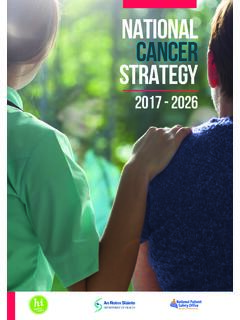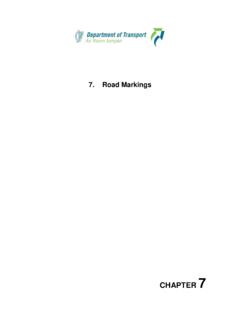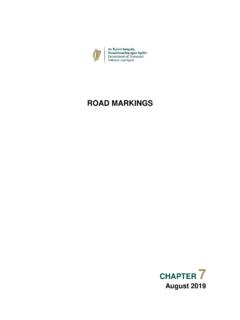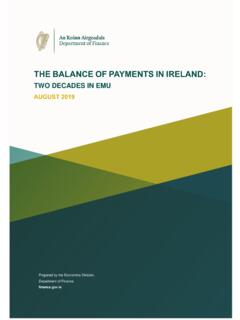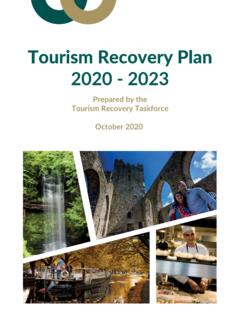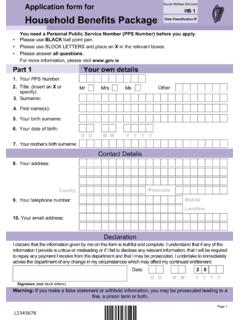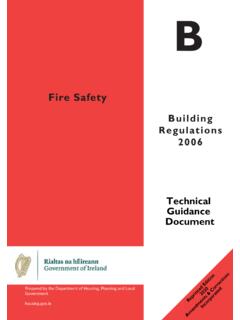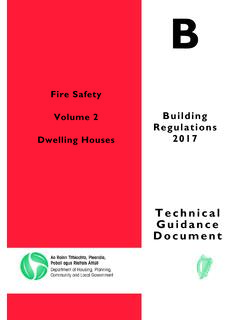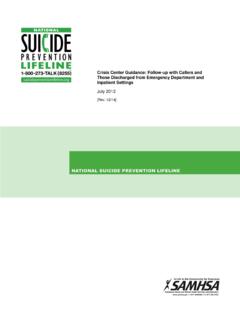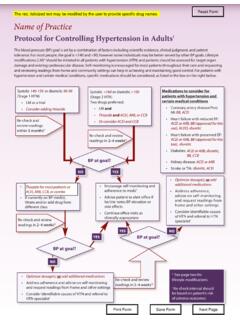Transcription of National Early Warning Score
1 National Early Warning Score National Clinical Guideline No. 1 February 2013 The National Early Warning Score and COMPASS Education programme project is a work stream of the National Acute Medicine Programme, HSE, in association with the National Critical Care Programme, HSE, the National Elective Surgery Programme, HSE, the National Emergency Medicine Programme, HSE, the Quality and Patient Safety Directorate, HSE, Patient Representative Groups, Nursing and Midwifery Services Directorate, HSE, the Clinical Indemnity Scheme (State Claims Agency), the Irish Association of Directors of Nursing and Midwifery (IADNAM), and the Therapy Professionals project is supported by the Royal College of Physicians and the Royal College of Surgeons in Clinical Guideline No.
2 1 ISSN 2009-6259 Published February 2013 Update August 2014: Practical guidance inserted following Recommendations 8, 16, 3 Updated National Patient Observation National Governance/ National Clinical Guideline Development Group s expectation is that healthcare professionals will use clinical judgement, medical and nursing knowledge in applying the general principles and recommendations contained in this document. Recommendations may not be appropriate in all circumstances and decisions to adopt specific recommendations should be made by the practitioner taking into account the circumstances presented by individual patients and available Clinical Effectiveness Committee (NCEC)The National Clinical Effectiveness Committee (NCEC) was established as part of the Patient Safety First Initiative in September 2010.
3 The NCECs mission is to provide a framework for National endorsement of clinical guidelines and audit to optimise patient and service user care. The NCEC has a remit to establish and implement processes for the prioritisation and quality assurance of clinical guidelines and clinical audit so as to recommend them to the Minister for Health to become part of a suite of National Clinical Guidelines and National Clinical Audit. National Clinical Guidelines are systematically developed statements, based on a thorough evaluation of the evidence, to assist practitioner and service users decisions about appropriate healthcare for specific clinical circumstances across the entire clinical system.
4 The implementation of clinical guidelines can improve health outcomes, reduce variation in practice and improve the quality of clinical decisions. The aim of National Clinical Guidelines is to provide guidance and standards for improving the quality, safety and cost effectiveness of healthcare in Ireland. The implementation of these National Clinical Guidelines will support the provision of evidence based and consistent care across Irish healthcare oversight of the National Framework for Clinical Effectiveness is provided by the National Clinical Effectiveness Committee (NCEC). The NCEC is a partnership between key stakeholders in patient safety and its Terms of Reference are to.
5 - Apply criteria for the prioritisation of clinical guidelines and audit for the Irish health system- Apply criteria for quality assurance of clinical guidelines and audit for the Irish health system - Disseminate a template on how a clinical guideline and audit should be structured, how audit will be linked to the clinical guideline and how and with what methodology it should be pursued- Recommend clinical guidelines and National audit, which have been quality assured against these criteria, for Ministerial endorsement within the Irish health system- Facilitate with other agencies the dissemination of endorsed clinical guidelines and audit outcomes to front-line staff and to the public in an appropriate format- Report periodically on the implementation of endorsed clinical is recognised that the health system as a whole, is likely to be able to effectively implement and monitor only a small number of new National clinical guidelines each year.
6 Not all clinical guidelines will be submitted for National endorsement and clinical guideline development groups can continue to develop clinical guidelines using an evidence based methodology in response to the needs of their own on the NCEC and endorsed National clinical guidelines is available on the Patient Safety First website at Table of Definition of Early Warning Scores and Scope of the National Clinical Guideline 5 Definition of Early Warning Scores 5 How Early Warning Scores work in practice 5 Scope of the National Clinical Guideline National Clinical Guideline Recommendations 6 Essential elements 6 Clinical processes 6 Measurement and documentation of observations 6 Escalation of care 8 Emergency Response Systems 10 Clinical communication 12 Implementation 12 Organisational supports 12 Education 13 Evaluation and audit 15 Using this National Clinical Guideline National Clinical Guideline 18 Overview 18 Purpose/objectives 19 Legislation and other related policies 19 Guiding principles for the National Clinical Guideline 19 Implementation 20 Barriers to implementation 20 Enablers for implementation 20 Dissemination 21 Updating the National Clinical Guideline
7 21 Roles and responsibilities 21 Organisational responsibility 21 All clinical staff Background to the development of the NEWS and associated education programme 23 Benefit of using a NEWS Methodology for the development of the NEWS and associated education programme 25 Aim of National Early Warning Score Project 25 NEWS National Governance/ National Clinical Guideline Development Group and Advisory Group 25 Patient representation 27 Acknowledgements 27 The evidence 28 Baseline audit 28 Strengths, Weaknesses, Opportunities and Threats (SWOT) analysis 28 Literature search and review 29 Comparative analysis of the ALERT and COMPASS education programmes 29 Economic impact of a NEWS and COMPASS education programme 30 Linking evidence to recommendations 30 Level of evidence and grading of recommendations 31 Sign off of the NEWS and COMPASS education programme 31 New evidence 31 Inclusion of Early detection and initial treatment of sepsis in the programme 31 International consultation 32 National Clinical Guideline external review 32 Sign off and National launch 34 NEWS website 34 Conclusion 34 The future 35
8 Conflict of interest 35 Glossary of Terms 36 References/Bibliography 39 Resources 43 Appendices Appendix 1 Levels of Evidence and Grades of Recommendations (SIGN 2002) 44 Appendix 2 Levels of Evidence and Grade of Recommendations NEWS 45 Appendix 3 National Patient Observation Chart 64 Appendix 4 National Early Warning Score Recommendations for Audit Report 67 Appendix 5 National Early Warning Score Escalation Flow Chart 75 Appendix 6 ISBAR Communication Tool 76 Appendix 7 COMPASS Education Programme 77 Appendix 8 The National Early Warning Score and associated Education Programme (COMPASS ) Implementation Guide 79 Appendix 9 SWOT Analysis - The National Early Warning Score & Education Programme 81 Appendix 10 Early Warning Scores - A Literature Review 83 Appendix 11 Summary Comparison COMPASS and ALERT Education programmes 118 Appendix 12 Summary Economic Impact Report for the National Early Warning Score (NEWS)
9 And COMPASS Programme 120 Appendix 13 Signatories for the National Clinical Guideline and Policy for the NEWS 1275A National Clinical GuidelineNational Early Warning Definition of Early Warning Scores Early Warning Scores have been developed to facilitate Early detection of deterioration by categorising a patient s severity of illness and prompting nursing staff to request a medical review at specific trigger points (Mitchell et al., 2010) utilising a structured communication tool while following a definitive escalation plan. Adopting a National Early Warning Score (NEWS) is beneficial for standardising the assessment of acute illness severity, enabling a more timely response using a common language across acute hospitals nationally.
10 How Early Warning Scores work in practicePatient s vital signs (blood pressure, pulse, respirations etc.) are routinely recorded in acute hospitals. With the Early Warning Score system each vital sign is allocated a numerical Score from 0 to 3, on a colour coded observation chart (A Score of 0 is most desirable and a Score of 3 is least desirable). These scores are added together and a total Score is recorded which is their Early Warning Score . A trend can be seen whether the patient s condition is improving, with a lowering of the Score or dis-improving, with an increase in the Score . Care can be escalated to senior medical staff as appropriate. Scope of the National Clinical GuidelineThe National Clinical Guideline relates to the situation in an acute hospital setting, where an adult patient s physiological condition is deteriorating.
